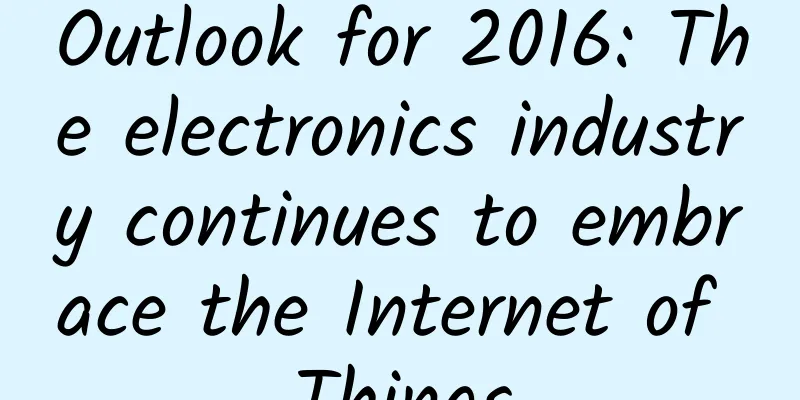Space junk is increasing day by day. How should we deal with it? (Part 2)

|
In the book "The increasing amount of space junk, how should we deal with it (Part 1)", we mainly learned about the sources and hazards of space junk. So how should we deal with and prevent space junk? In fact, scientists from various countries have come up with many ways to deal with it. Prevention is the best approach When the amount of space debris in low-Earth orbit exceeds a certain level, domino-like collisions are likely to occur, forming a vicious cycle and causing too much space debris to be tracked. This phenomenon is called Kessler syndrome . To this end, it is necessary to take space debris mitigation measures, such as establishing a tracking and early warning mechanism, limiting the generation of new debris, actively removing debris from orbit, and strengthening international legislation. At present, the most effective way to deal with space junk is to minimize its generation. The main solutions are as follows: One is to reduce the launch of objects that are not related to the flight mission and share spacecraft in a way similar to taking a bus. This can not only reduce duplicate launches and save money, but also reduce the probability of generating space debris. The second is to improve the design of space vehicles to prevent them from disintegrating in orbit. The third is to adjust the orbit of the failed spacecraft to deorbit it. Fourth, regularly monitor spacecraft that fail in orbit, as they may cause the creation of large amounts of debris. The collision and fragmentation of spacecraft is the source of a large amount of space debris. Effective measures to reduce collision and fragmentation include improving the design of spacecraft and selecting orbits with low collision probability. Specific methods to prevent the generation of space debris include energy dissipation, tethering, junk orbit and reuse. The so-called "energy dissipation" is to eliminate all energy that may cause the rocket's final stage or spacecraft to explode in orbit. The measures include exhausting or emptying the remaining propellant and high-pressure gas in the final stage of the carrier rocket that has completed its work, and permanently cutting off the circuit of the battery in the final stage or spacecraft. These measures are also called passivation treatment. For example, the final stage rocket of my country's Long March 4B once implemented the "three-release" policy through the exhaust system after the separation of the satellite and the rocket, that is, to release the liquid in the tank, the gas in the gas cylinder, and the energy of the battery. In this way, the rocket itself will not explode unless it collides with other spacecraft. In addition, some countries plan to shorten the deorbit period after the completion of the mission in near-Earth orbit from 25 years to 5 years. This requires that the design of spacecraft must take into account the convenience of capture and deorbit, and formulate a list of priority orbital debris removal. Using a tether to clean up garbage "Tethering" refers to tethering the discarded objects generated during the launch and operation of the spacecraft to the spacecraft, such as lens covers, fasteners, etc. For example, the detector cover can be connected to the main body. However, this method is not yet popular. "Junk orbit" refers to the use of remaining fuel to push a spacecraft into a specified orbit dedicated to "burying" end-of-life spacecraft before the end of its working life. The junk orbit of a retired geostationary satellite is generally an orbit 300 to 400 kilometers higher than the geostationary orbit. The disadvantage of this method is that it consumes satellite fuel and affects the life of the satellite. Therefore, it is possible to consider using an on-board electric propulsion system to push it into the junk orbit. Space experts are also studying the reuse of launch vehicles and certain spacecraft. The United States has successfully launched the Falcon 9, Falcon Heavy, partially reusable rockets, and the Dragon Cargo and Dragon Crew, partially reusable spacecraft, and is developing reusable Starship heavy rockets and spacecraft. Chinese and foreign researchers are also using or studying technologies such as in-orbit satellite repair and in-orbit refueling to reduce the number of obsolete spacecraft and extend the life of spacecraft. my country's space station is the world's first "home port" for spacecraft, and can perform in-orbit maintenance on other spacecraft flying in the same orbit. For example, my country will launch the "Xuntian" space telescope to fly in the same orbit as the "Tiangong" space station. After a long flight, it can fly to the space station as needed, rendezvous and dock with the "Tiangong", and astronauts will carry out activities such as propellant replenishment, equipment maintenance and payload equipment upgrades, and then separate and fly back to the original orbit to continue working. Reducing space debris is also inseparable from the formulation of relevant space laws and regulations. In recent years, the rapid development of small satellites has led to a sharp increase in the number of space objects. In particular, many satellites have low functions and short lifespans, which will cause a large amount of space debris. Therefore, legislation on small satellites has become a hot topic in the current international outer space field, and relevant international organizations are studying space traffic management rules for small satellite management. Since small satellites are small in mass, low in cost, and large in number, they have a huge impact on the space environment, so they should comply with stricter space debris mitigation requirements. Implementing space traffic management will be the most fundamental way to solve the safety of small satellites in orbit. How to deal with existing space junk Today, humans can monitor space debris larger than 10 centimeters, and use the spacecraft to maneuver before it collides with a normally functioning spacecraft to "avoid" it. Although it is still impossible to monitor space debris between 1 millimeter and 1 centimeter, it can be "resisted" by the spacecraft's own shell. The most dangerous is space debris between 1 and 10 centimeters, which cannot be "avoided" by monitoring, and it is difficult to "resist" its violent collision with the spacecraft's own shell. It is difficult to reduce the total amount of space debris and eventually remove the accumulated space debris in the near future or over a long period of time. At present, the most practical way to deal with existing space debris is to "hide" . The space station often changes its orbit to avoid space debris that may collide with it. In 2021, the Chinese space station also made two emergency orbit changes to avoid the US Starlink satellite. Schematic diagram of the US "space-based space surveillance" system satellite in orbit The premise of "avoidance" is to accurately monitor and calculate the orbit of space debris, so as to provide early warning for spacecraft. Ground-based monitoring of space objects is generally divided into two types: radar monitoring and optical monitoring. Radar mainly monitors low-orbit objects, while optical monitoring mainly monitors high-orbit objects. In recent years, the United States has also launched a "space-based space surveillance system" satellite, which can continuously monitor all flying objects in the Earth's orbit without any hindrance. Germany plans to use a method that combines laser precision ranging with passive optical tracking, using telescopes to determine the angular coordinates of space debris, and using laser ranging technology to determine the distance of space debris, and then calculate the location of space debris. As early as 2005, my country's Purple Mountain Observatory began to use optical telescopes to monitor space objects. In addition, spacecraft can also adopt a variety of "anti-" protection methods. For example, adjust the position of vulnerable components and use shielding protection to strengthen the surface. All spacecraft can use shielding protection structures to deal with 0.1 to 1 cm debris, but to deal with 1 to 10 cm debris requires special design. The disadvantage of this method is that it will increase the manufacturing and launch costs of spacecraft, so the "bulletproof vest" of spacecraft must use new materials that are both strong and lightweight. Astronauts on the International Space Station installed several aluminum shields on key locations outside the station during spacewalks. Special protective devices are also installed on the exterior of the experimental cabins of my country's Tiangong-1 target spacecraft and Tiangong-2 space laboratory. The crew of China's Shenzhou 18 and 19 have or will install debris protection devices for the space station, which can resist a large number of tiny debris less than 1 cm in size and difficult to detect. The debris protection devices are made of special materials and can absorb energy and reduce damage to the space station. Astronauts who are doing spacewalks mainly rely on space suits for protection. Of course, it is best not to leave the spacecraft in areas with debris. For debris larger than 10 centimeters, it is unrealistic to protect against debris of this size due to weight and volume limitations. When the precise orbital parameters are known, the only way to avoid collision is to use orbital maneuvers. The sealed experimental cabins in front of Tiangong-1 and Tiangong-2 are equipped with special protective plates on the side walls, which are equivalent to wearing bulletproof vests. They have a 2-3 mm thick metal coat. In case of a 5 mm leak, Tiangong-1 and Tiangong-2 can maintain a cabin pressure of no less than 70 kPa for about 80 minutes, giving the astronauts time to escape. Researching new tricks At present, many countries in the world are actively studying various new methods to manage space debris, including collecting, burning and deorbiting space debris. The European Space Agency will launch the world's first mission to remove space debris in orbit in 2025, namely the launch of the CleanSpace-1 spacecraft, which will be used to test the technology of removing space debris in orbit. This special spacecraft is a new type of four-armed garbage collection robot. A special device in the form of a net or a robot tentacle is installed outside its body to grab space debris and hold it tightly. Schematic diagram of Space Cleaner 1 The weight of CleanSpace 1 is less than 400 kilograms, and it is "highly autonomous" and made of special metal materials, so it will not be unable to perform its duties due to the impact of space debris. According to the plan, CleanSpace 1 will first be sent into an orbit 500 kilometers high for adjustment, and then it will change its orbit to an orbit of more than 600 kilometers high, capture the "Vega Secondary Payload Adapter" there, and finally drag the simulated space debris into the atmosphere to burn. If the above test is successful, it will pave the way for future in-orbit space debris removal missions. Japan is researching electric tether system removal technology. It is suitable for removing large space debris and is installed on cargo ships. Once the tether system on the cargo ship finds space debris, it can rely on navigation satellites to gradually approach the space debris, and when the distance is close enough, it uses optical cameras to cooperate to grab the space debris. However, some experts believe that the technology is difficult, expensive, and inefficient. According to a report on July 22, 2024, Japan's Astroscale will use the ELSA-M space tugboat to remove a defunct OneWeb low-orbit broadband satellite in 2026. ELSA-M will re-enter the atmosphere and burn up within five years after completing its mission. On June 25, 2016, China sent the Aolong-1 test payload into orbit during the first launch of the Long March 7, conducting the world's first active deorbit test of space debris. It aims to simulate space debris, using a robotic arm to simulate grabbing simulated space debris and bringing it to the atmosphere to burn it, thus verifying the key technology for removing space debris. In the future, China will also carry out technical research in areas such as space environment management robots. The above methods all use the rendezvous and capture removal technology to capture space debris and then drag them into the Earth's atmosphere for combustion and decomposition. This method is mature and reliable, but the cost is relatively high. For this reason, some researchers have also proposed other methods of dealing with space junk. For example, the "burning method" is to use high-power lasers to irradiate space junk, so that it is crushed into particles and then rapidly decays from orbit. For small junk, strong lasers can be used to burn and vaporize it. However, this method is likely to cause space wars. There is also the "deorbit method", which is to make space debris leave its original orbit, or directly descend into the atmosphere to burn up; or transfer it to a short-lived orbit (less than 25 years). In addition to using the spacecraft's own propulsion system to change orbit, it is also possible to activate the spacecraft's devices used to increase atmospheric resistance, such as large-area sailboards or inflatable parachutes, thereby reducing the speed of the spacecraft, leaving the orbit, and finally re-entering the atmosphere to burn up. This method is suitable for dealing with space debris in orbits below 600-700 kilometers. It is relatively simple and does not require attitude control. When space debris is above 1,200 kilometers, atmospheric resistance no longer exists, and the sun's light pressure can be used to remove it from orbit. Deorbiting is to make space debris leave its original orbit, or directly descend into the atmosphere to burn up, or transfer it to a short-lived orbit (less than 25 years). In addition to using the spacecraft's own propulsion system to change orbit, it is also possible to activate devices on the spacecraft that increase atmospheric resistance, such as large-area sailboards or inflatable parachutes, thereby reducing the speed of the spacecraft, leaving its orbit, and finally re-entering the atmosphere to burn up. This method is suitable for dealing with space debris in orbits below 600-700 kilometers. It is relatively simple and does not require attitude control. When space debris is above 1,200 kilometers, atmospheric resistance no longer exists, and the sun's light pressure can be used to remove it from orbit. Laser active removal technology can also be used, that is, using high-energy pulsed laser beams to irradiate the surface of space debris, causing it to generate plasma and eject it outward. The ejected plasma will produce a reverse force on the space debris, causing the speed of the space debris to decrease. This technology meets all the requirements of active removal of space debris technology, so it has broad prospects, and key technical research is currently underway. Another option is to use jet removal technology, which involves jetting gas, liquid, ion beams, etc., at space junk to increase its flight resistance and thus reduce its flight speed. This technology has poor controllability. There are other ways to reduce space debris, such as using foamed metal to make spacecraft so that they can quickly and completely burn into gas when they re-enter the atmosphere; developing lightweight and cheap ceramic and polymer materials and adding them to the surface of spacecraft to make shields to resist the impact of small debris. On November 4, 2024, the world's first wooden-shelled artificial satellite developed by Japan was launched. When it is retired and re-enters the atmosphere, the wood material will burn out. The current metal-shelled satellites will produce metal particles that have a negative impact on the environment and communications when they are retired and returned to Earth. There are countless ideas for dealing with space junk, but all of them require that no more space junk be generated and the cost be relatively low. At present, most of the above technologies are still at the "paper talk" stage, requiring a long period of in-depth exploration and continuous testing. In short, dealing with space debris is a multidisciplinary, comprehensive, and long-term task that requires all countries to pay attention and carry out extensive international cooperation so as to work together to protect the space environment shared by mankind. Author: Pang Zhihao Chief Scientific Communication Expert of National Space Exploration Editor: Dong Xiaoxian Reviewer: Liu Kun and Li Peiyuan |
>>: Good news for wound healing: snails on French tables are not only delicious but also useful!
Recommend
Can physicists predict shootings?
A physicist applied the method of studying multi-...
Tutorial on how to attract traffic with short videos on Tik Tok!
1. Register a short video platform account : If y...
Case analysis: How to implement promotion and operation layout strategy on Zhihu?
How to promote products or individuals on the Zhi...
Healthy eating tips for families: Eat to stay healthy and improve immunity
Do you have a low immune system and the flu virus...
How can an individual create a WeChat mini program? Earning a million dollars a year is not a dream
At present, few people have found the profit mode...
Why do you advise everyone to wait for the official version of iOS 15.6? There are four reasons
Ever since Hongmeng 3.0 and Android 13 are about ...
[Umeng+] Li Danfeng: Insight into the business secrets of big data from user behavior data
[51CTO.com original article] The WOT 2016 Big Dat...
Ten years later, China's mobile phone bull market is on the rise
When " Jack Ma " stands at the crossroa...
Technology News丨my country's first photovoltaic energy storage demonstration experimental platform is put into operation
【Today’s cover】 On November 19, a partial lunar e...
China Automobile Dealers Association: In-depth analysis of the national used car market in September 2021
01. Market Overview in September 2021 In Septembe...
Do you always remember things wrongly? Don’t panic! This means your brain is working properly…
Reviewer of this article: Chen Haixu, Deputy Dire...
How to increase Kuaishou fans? Kuaishou likes-boosting platform online!
Professional Douyin and Kuaishou likes-boosting p...
Low-key Ganzi, Sichuan, contains such a unique color aesthetics
Ganzi, Sichuan A very humble name It encompasses ...
The interface is much cleaner! Alipay is testing the function of closing the homepage column card
On October 25, some netizens reported that Alipay...









